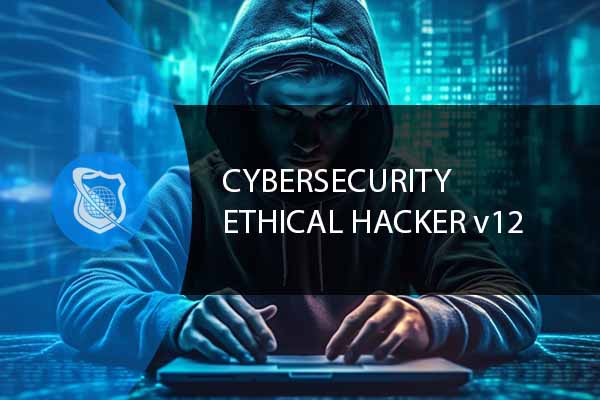What Is Air Interface?
The air interface is a critical concept in the telecommunications sector, particularly within the realms of mobile networks and wireless communication systems. This term refers to the radio frequency (RF)

Governance, Risk, and Compliance (GRC) are the cornerstone elements of any robust information security management program. These three pillars are not just buzzwords but critical components that ensure the security and integrity of an organization’s data. For professionals aiming to earn or leverage a Certified Information Security Manager (CISM) certification, understanding GRC is imperative. This blog serves as a comprehensive guide to GRC as it relates to CISM and information security management.
Unlock your full potential in cybersecurity with our cutting-edge CISM training course! This isn’t just another certification; it’s a career game-changer. Designed for pros who’ve already aced Cisco and Microsoft exams like PenTest+ or CySA+, this course will arm you with advanced skills and the confidence to pass the CISM exam. Take the leap—enroll today!
Understanding the role of Governance, Risk, and Compliance in information security is crucial for aligning security measures with business objectives. These elements serve as the backbone for creating a resilient and secure organizational environment.
Key Takeaways:
Governance in the context of CISM involves creating policies and procedures that align an organization’s information security strategies with its objectives. It’s about setting the right framework and ensuring that the security measures are in line with the organization’s goals.
| Term | Description |
|---|---|
| Policy Framework | A set of policies that guide the organization’s security measures. |
| Strategic Alignment | Ensuring that security strategies align with business objectives. |
CISM certification equips professionals with the skills to develop and manage an effective governance framework, making them invaluable assets in any organization.
Risk Management is about identifying and mitigating security risks that could jeopardize an organization’s data and operations. CISM professionals are trained to assess risks and implement strategies to mitigate them effectively.
CISM certification ensures that you are well-equipped to handle these steps, making you an expert in information security risk management.
Compliance is the third pillar of GRC and focuses on adhering to regulatory standards like GDPR, HIPAA, and other industry-specific regulations. Non-compliance can result in hefty fines and reputational damage, making it a critical aspect of information security management.
CISM professionals are trained to ensure that an organization’s information security measures are compliant with these and other regulations, thereby minimizing legal risks.
Whether training a few or hundreds of employees, we have an exceptional compinace training series covering OSHA, HIPPA and Sexual Harrassment. Track, monitor and document your employees’ required training.
Governance, Risk Management, and Compliance are interconnected facets of information security management. Mastery of these pillars enables a CISM-certified professional to create a holistic security program that not only protects an organization but also aligns with its business objectives.
Understanding GRC is not just essential for real-world applications but also for acing the CISM exam. The exam includes questions that test your knowledge and understanding of governance, risk management, and compliance.
Exam Preparation Tips:
In the real world, GRC comes into play in various scenarios, from setting up a new security policy to responding to a data breach. Understanding these pillars enables a CISM-certified professional to make informed decisions that protect the organization while aligning with its objectives.
Steps to Implement GDPR Compliance:
Steps to Develop a Risk Management Strategy:

Ready to become an unstoppable force in cybersecurity? Our Certified Ethical Hacker V12 course is your gateway to mastering the art of ethical hacking. Dive deep into vulnerability analysis, target scanning, and stealthy network penetration. With hands-on activities and expert insights, you’ll learn to break into target networks, gather evidence, and exit without a trace. Don’t just learn to hack—learn to hack like a pro!
Governance, Risk, and Compliance are more than just industry jargon; they are the pillars upon which effective information security management stands. For professionals aiming to make the most of their CISM certification, mastering these aspects is non-negotiable. This blog has aimed to provide a comprehensive understanding of GRC in the context of CISM, equipping you with the knowledge you need to excel both in the exam and in the field.
GRC stands for Governance, Risk Management, and Compliance, three crucial components that form the backbone of effective information security management. From a Certified Information Security Manager (CISM) perspective, mastering GRC is vital because it ensures an organization’s information security strategies are aligned with its business objectives, risks are adequately identified and managed, and compliance with laws, regulations, and policies is maintained. This holistic approach not only protects an organization from various security threats but also supports its overall governance structure.
Implementing effective Governance practices in Information Security Management involves establishing a clear framework that defines policies, procedures, and standards for managing and protecting information assets. As per CISM guidelines, professionals should start by ensuring senior management’s commitment and involvement in setting information security strategies that align with the organization’s goals. This includes defining roles and responsibilities, fostering a culture of security awareness, and continuously monitoring and reviewing the governance framework to adapt to changing threats and business objectives.
The CISM approach to Risk Management in Information Security emphasizes the identification, assessment, and prioritization of risks followed by the application of resources to minimize, control, or eliminate these risks. Strategies include conducting regular risk assessments, implementing risk mitigation controls, and establishing a risk management framework that is integrated with the organization’s overall risk management processes. This approach ensures that information security risks are managed proactively and in alignment with the organization’s risk appetite and business priorities.
Compliance in the GRC framework refers to adhering to laws, regulations, standards, and policies that apply to information security. According to CISM principles, compliance is not just about following rules but also about understanding the implications of these regulations on the organization’s information security posture. This involves regular compliance assessments, aligning information security policies with legal and regulatory requirements, and ensuring that employees are trained on compliance matters. Effective compliance management protects the organization from legal penalties, reputational damage, and financial losses while also reinforcing trust with customers, partners, and regulators.
Integrating GRC in Information Security Management is crucial for achieving business objectives because it ensures that information security practices are not only technically sound but also strategically aligned with the business’s goals and risk tolerance. It involves a balanced approach to managing information security risks, ensuring compliance with relevant laws and regulations, and governing the organization’s information security program to support business outcomes. This integration helps in making informed decisions, optimizing resource allocation, and enhancing operational efficiencies, thereby contributing to the organization’s success and resilience in the face of security challenges.
Lorem ipsum dolor sit amet, consectetur adipiscing elit. Ut elit tellus, luctus nec ullamcorper mattis, pulvinar dapibus leo.
$49.99 Original price was: $49.99.$16.99Current price is: $16.99. / month with a 10-day free trial
The air interface is a critical concept in the telecommunications sector, particularly within the realms of mobile networks and wireless communication systems. This term refers to the radio frequency (RF)
Algorithmic complexity, also known as computational complexity, is a critical concept in computer science that pertains to the efficiency of algorithms. This efficiency is measured in terms of the time
Ambient Computing refers to the integration of digital technology into the environment around us in such a way that it operates in the background, seamlessly and unobtrusively assisting with daily
Hexadecimal, often abbreviated as “hex,” is a base-16 numeral system used in mathematics and computing. It utilizes sixteen distinct symbols: 0-9 to represent values zero to nine, and A-F (or
A parity bit is a simple, yet powerful, error-detection mechanism used in digital communications and data storage to ensure the integrity of data. It’s an additional bit added to a
Quantum Imaging represents a cutting-edge technology at the intersection of quantum physics and optical imaging. This innovative field leverages the principles of quantum mechanics, particularly the entanglement and superposition of
A browser, short for web browser, is an indispensable software application designed to access the world wide web. At its core, a browser enables users to visit web pages, interact
Virtual inheritance is a concept in the realm of object-oriented programming (OOP), specifically aimed at addressing and resolving the “diamond problem” that arises in certain complex inheritance scenarios. This term
Function as a Service (FaaS) is a cloud computing service model that allows developers to build, run, and manage application functionalities without the complexity of building and maintaining the infrastructure
A Data Registry is a centralized system designed to collect, manage, and store information on specific datasets, making it easier for users to find and use the data they need.
A Hard Fork is a significant change to a blockchain network’s protocol that makes previously invalid blocks and transactions valid, or vice-versa. This type of protocol upgrade requires all nodes
Transistor-Transistor Logic (TTL) is a class of digital circuits built using bipolar junction transistors (BJTs) and resistors. It is one of the most widely used logic families for digital integrated
ENDING THIS WEEKEND: Train for LIFE at our lowest price. Buy once and never have to pay for IT Training Again.